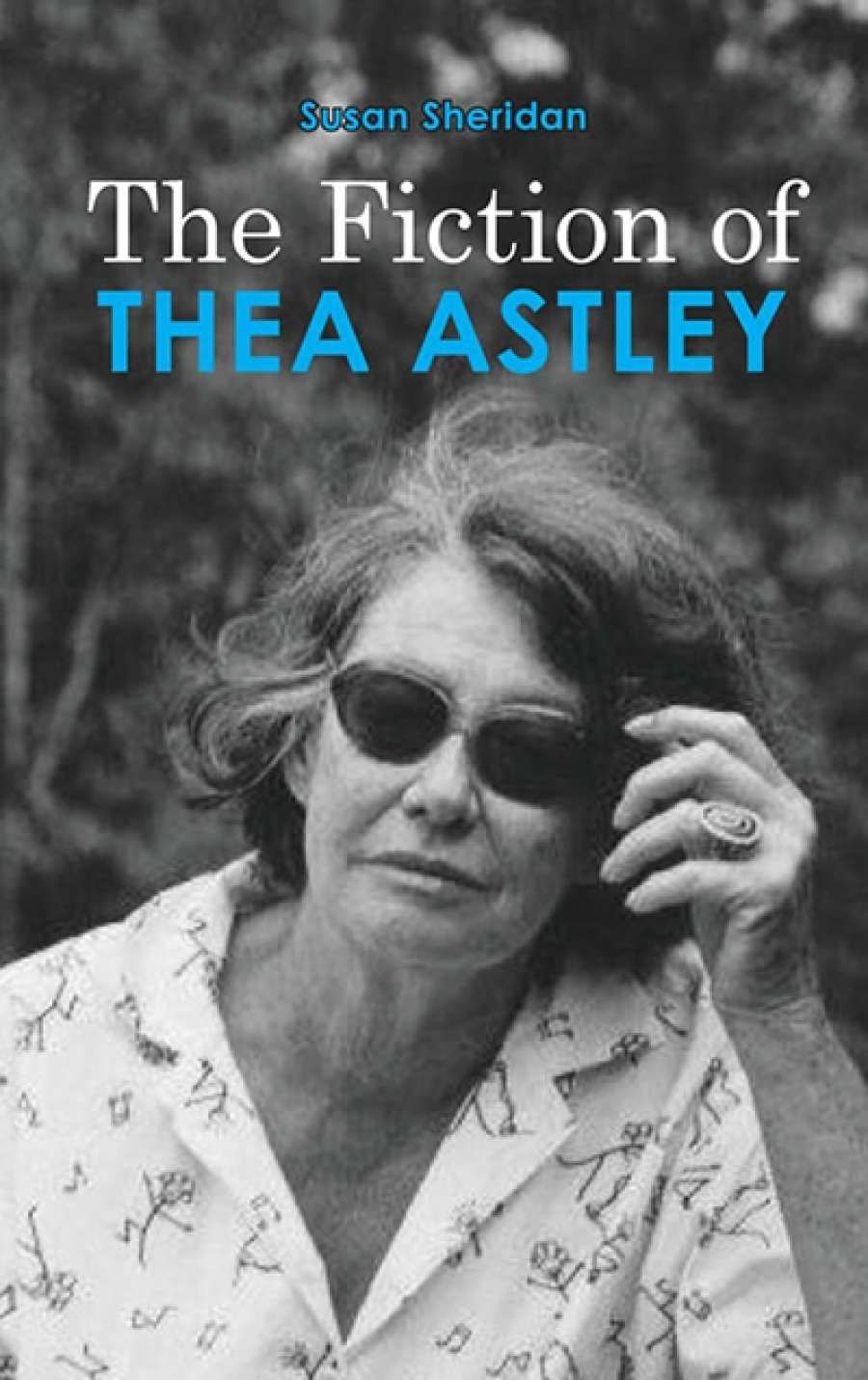
- Free Article: No
- Contents Category: Biography
- Custom Article Title: Kerryn Goldsworthy reviews 'The Fiction of Thea Astley' by Susan Sheridan
- Book 1 Title: The Fiction of Thea Astley
- Book 1 Biblio: Cambria Press $109.99 hb, 182 pp, 9781604979329
For a variety of reasons, it has become increasingly difficult over the last twenty years or so for scholars of Australian literature to publish full-length works, especially critical studies of individual authors. Cambria Press is an academic publishing house based in the United States, and its Cambria Australian Literature Series was established in 2008 under the general editorship, then as now, of Susan Lever. The Fiction of Thea Astley is the latest in its series of monographs on Australian authors, which includes studies of the works of Christopher Koch, Shirley Hazzard, and David Foster, among others. The people most likely to buy this book are academics and university librarians, who are used to the prohibitive prices of most academic texts, but it can also be accessed electronically; e-versions start at $8.99 for a short rental, with library rentals and longer periods for various other prices.
Since Astley’s death in 2004, interest in her work has been sustained by various means, not least the collection of essays edited by Sheridan and Paul Genoni, Thea Astley’s Fictional Worlds (2006). This new study, coming in the wake of Karen Lamb’s biography of Astley, Inventing Her Own Weather (2015), is the first full-length critical monograph on Astley’s fiction; in her Introduction, Sheridan says, ‘One of my hopes for this book is that it will contribute to confirming her reputation as a major novelist.’
Sheridan herself is one of the most respected and reliable scholars in Australian literary studies, and this book should certainly fulfil her hopes for it; she is one of those critics who can manage to be engaging and readable without any glossing over or dumbing down of complex ideas. There are little flourishes of throwaway wit, as when she describes the titles of Hunting the Wild Pineapple (1979) and It’s Raining in Mango (1987) as ‘fruity’, and of disarming directness in her engagement with other critics: ‘This is a misreading of the text, I believe.’
The description of Astley’s fiction in the Introduction covers every one of her sixteen works of fiction, one way or another, and serves as a basis for Sheridan’s own critical approach:
[Astley’s] work is driven by a moral revulsion against greed and corruption, against class prejudice and the cruelties practiced on social outsiders, against the racism of colonial dispossession and exploitation of Indigenous people, and against the presumption of male superiority and the physical and psychic violence practiced against women.
Accordingly, Sheridan’s critical methodology comes mainly from the toolboxes of feminist and post-colonial critique. But she neither confines herself to these approaches nor swamps the practice with the theory, and she uses the idea of location, with its implied corollary of community, as a structural basis for the book: ‘The distinctive appeal of her work comes from her unique sense of place, in tropical Queensland and the South Pacific,’ she writes, and later adds, ‘The main organizing principle in this study of Astley’s fiction is her representation of place and power relations, and the innovative work of historicizing place.’
 Thea Astley (The University of Queensland/National Library of Australia)Sheridan also pays close attention to the business of storytelling, patiently sorting through the many narrative voices and focal characters of Astley’s complex techniques, especially in such works as A Kindness Cup (1974), where the time frame is both jumbled and compressed, its events filtered through one character’s consciousness and memory. There is also steady attention, throughout the book, to Astley’s shifting genres and modes – realism, comedy, irony, satire, tragedy – as well as to her ornate style. The Acolyte (1972) is described as ‘a sustained exercise in showing off, Astley’s virtuoso style at its most punning, allusive, and anarchic’.
Thea Astley (The University of Queensland/National Library of Australia)Sheridan also pays close attention to the business of storytelling, patiently sorting through the many narrative voices and focal characters of Astley’s complex techniques, especially in such works as A Kindness Cup (1974), where the time frame is both jumbled and compressed, its events filtered through one character’s consciousness and memory. There is also steady attention, throughout the book, to Astley’s shifting genres and modes – realism, comedy, irony, satire, tragedy – as well as to her ornate style. The Acolyte (1972) is described as ‘a sustained exercise in showing off, Astley’s virtuoso style at its most punning, allusive, and anarchic’.
Sheridan traces Astley’s steadily increasing intellectual and political sophistication while showing how certain themes, preoccupations, and stylistic features, apparent even in her earliest novels, keep reappearing throughout the rest. Unlike any critical discussion of Astley’s work that has preceded it, this book not only offers multiple comparative analyses of different novels, but also represents a kind of stepping back: a broadening of critical perspective to look at Astley’s entire oeuvre as a single entity, and to discern its patterns and developments over time.


Comments powered by CComment